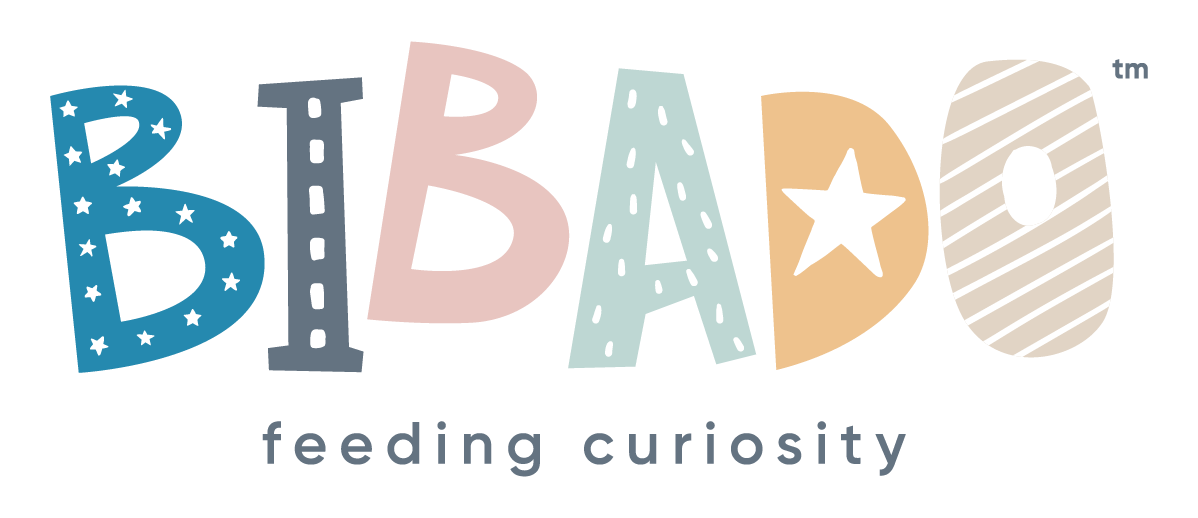Mealtime adventures are better with Bibado! Let our award-winning products make a difference to your weaning journey.
 Shop Now
Shop Now


Remember, the right utensils can make your weaning journey smoother, encouraging your baby to develop healthy eating habits and fostering a positive relationship with food. You’re better off sacrificing volume and investing in fewer but better quality weaning essentials than having a drawer full of good-looking but useless utensils!

When choosing the best spoons for weaning, you'll quickly realise there’s a wide range of options available. Forget fads and unnecessary gimmicks. The utensils you decide to start your baby on solids are instrumental in helping them acquire crucial motor skills and fast-track feeding independence.
We recently caught up with leading Children's Dietitian Lucy Upton who shared her scoop on what to look for in weaning spoons and what to leave behind. We’ve compiled this mini blog with our key takeouts but you can watch her review here:
The fundamentals
Value shopping platforms have spawned a plethora of products of unknown provenance. This might offer a lot of choice at knockdown prices, but it more often than not means there has been a compromise on quality.
Before considering the myriad forms and functions of the available baby-weaning spoons, consider brand reputation and quality and safety testing stringency. Look for evidence of compliance with the requisite industry regulations—most brands will state this on their website descriptions.
You’ll also want to look for food-grade BPA-free silicone materials and products.
Once you’ve verified that you’re dealing with a reputable brand, there are some key features and attributes to look out for.
Handle size & shape
Little hands require ergonomically shaped tools, so opt for utensils with stockier, chubbier nub handles that are easier to hold with a fisted grasp (typical in children up to 1.5 years old).
In the early days of weaning, parental assistance is needed to support independent feeding and guide spoons into the midline. The Dippit’s unique two-handed design can be offered to your baby and supports developing elbow flexion (effectively bringing the spoon to the mouth with two hands with a hinged elbow motion).
Anti-slip handle properties can also be helpful, as mealtimes can be pretty messy at this stage. One of the most significant challenges children face while getting to grips with cutlery control is the loss of interest that comes with frequently dropped utensils.
This is where Bibado’s Handi Cutlery comes to the rescue. It attaches only to the Coverall Weaning Bib, keeping cutlery at the ready no matter how often it drops. This minimises frustration and gives little mealtime adventurers a strong sense of feeding autonomy.
Avoid
Long-handled and flat-handled spoons are tricky to manoeuvre with little hands and are more likely to hit the back of the mouth, leading to unnecessary overstimulation of the gag reflex.
This can be anxiety-inducing for babies and parents alike, but it can also lead to negative associations with mealtimes and refusal to eat. These are not really designed for self-feeding at all.
Bowl size
When was the last time you tried eating with a shovel? That’s precisely what it will feel like if you give your child a spoon with a giant and/or deep-bowled spoon. T
here’s a fine balance to strike here.. Your baby is still strengthening the mouth muscles needed to effect the lip closure for clearing a spoon.
At the same time, their coordination skills are still developing, so you’ll want to choose a spoon that holds adequate food to reach their mouth, give or take a few stutters and spills.
Avoid
Consider the size and depth of the spoon’s bowl compared to the size of your little one’s mouth. Steer clear of very wide spoons - they’ll be challenging to fit in their mouths physically and could lead to frustration and lack of interest.
Deep bowls similarly may lead to either difficulty in handling that volume of food or inability to clear the spoon.
Form over function
Developmental benefits should always usurp design aesthetics. You’ll see many spoons on the grid that look uber-stylish.
They might complement the tones of your rose-gold saucepan handles beautifully, but they’re going to do zilch for your child’s development, and even worse, they could pose a safety risk to your child.
Avoid
Overly flexible spoons that bend when they hit the cheeks, lips and mouth. Developing coordination and accuracy takes a while, so spoons will inevitably miss the target. Flexible spoons will lead to dropped food and frustration.
Spoons with removable parts—moulded one-piece solutions are safest. In our research, we came across bamboo spoons with removable silicone bowls.
These might look good, but the removable parts can harvest mould if improperly washed and pose a choking hazard.
Remember, the right utensils can make your weaning journey smoother, encouraging your baby to develop healthy eating habits and fostering a positive relationship with food.
You’re better off sacrificing volume and investing in fewer but better quality weaning essentials than having a drawer full of good-looking but useless utensils!
You can view Lucy’s review of weaning spoons here.
Follow us for more delicious, nutritious bite-size Bibado goodness